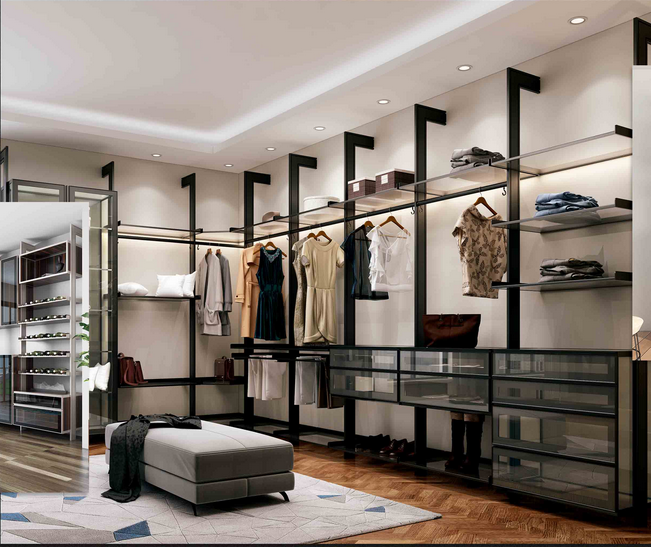
Minimalist Wardrobe Designs That Maximize Space and Style
In an era where living spaces are shrinking and clutter feels inevitable, the minimalist wardrobe has emerged as a practical and stylish solution. More than just a trend, minimalist wardrobe design represents a mindful approach to fashion and home organization—one that prioritizes quality over quantity, functionality over excess, and timeless style over fleeting trends. By carefully curating both the contents and the physical structure of your wardrobe, you can transform even the smallest closet into a space that feels spacious, efficient, and visually pleasing.
At the core of minimalist wardrobe design lies the principle of intentionality. This means selecting pieces that serve multiple purposes, fit well with your lifestyle, and complement each other seamlessly. A minimalist wardrobe isn’t about having as few items as possible; it’s about having the right items that work harmoniously together. This approach not only reduces decision fatigue but also creates a more sustainable relationship with fashion, as fewer purchases mean less waste and a smaller environmental footprint.
When it comes to the physical design of a minimalist wardrobe, maximizing space starts with smart layout planning. Vertical space is often underutilized in traditional closets, but installing double hanging rods can instantly double your hanging capacity. The upper rod can be used for longer items like dresses and coats, while the lower rod accommodates shirts and pants. Additionally, incorporating adjustable shelves allows for flexibility as your storage needs change—whether you need more space for folded sweaters or taller boots.
Drawer systems are another essential element of minimalist wardrobe design, but not all drawers are created equal. Opt for shallow drawers for smaller items like socks and accessories to prevent the “black hole” effect where items get lost at the bottom. Dividers and organizers within drawers keep everything visible and accessible, eliminating the need to rummage through piles. For items that are used less frequently, such as seasonal clothing or special occasion wear, under-bed storage containers or slimline cabinets at the top of the wardrobe provide out-of-sight solutions without sacrificing the minimalist aesthetic.
Open shelving is a hallmark of minimalist design, offering both storage and display opportunities. By showcasing your most stylish or frequently used items on open shelves, you create a visually cohesive look while keeping essentials within easy reach. To maintain the minimalist vibe, avoid overcrowding shelves—leave some empty space to create a sense of airiness. Matching hangers, preferably in neutral colors like white, black, or wood, further enhance the streamlined appearance by eliminating visual clutter.
Lighting plays a crucial role in making a minimalist wardrobe feel spacious and inviting. LED strip lights installed along shelves or inside cabinet doors illuminate dark corners, making it easier to see and access items. Natural light is equally important, so if your wardrobe is near a window, avoid blocking it with heavy curtains or bulky furniture. Mirrors can also be strategically placed to create the illusion of depth, making even a small wardrobe feel larger than it actually is.
The color palette of both your wardrobe contents and its physical structure contributes significantly to the overall minimalist aesthetic. Neutral tones—such as white, beige, gray, and black—form the foundation of a minimalist wardrobe, as they are versatile and easy to mix and match. This doesn’t mean you have to avoid color entirely; adding a few accent pieces in muted hues like sage green or soft blue can introduce personality without disrupting the cohesive look. Similarly, choosing wardrobe fixtures in light, natural materials like wood or white laminate creates a sense of calm and openness.
Functionality and style go hand in hand in minimalist wardrobe design. Multi-functional furniture pieces, such as a storage ottoman at the foot of a dressing area or a mirror with built-in jewelry storage, add practicality without taking up extra space. Hooks, whether mounted on the back of a door or along a wall, provide a temporary home for frequently used items like scarves or robes, keeping them accessible but not cluttering surfaces.
Maintaining a minimalist wardrobe requires ongoing curation. Regularly assessing your clothing and accessories—donating or selling items that no longer fit, are rarely worn, or don’t align with your current style—prevents the gradual accumulation of clutter. This process of editing ensures that your wardrobe remains a reflection of your personal style and practical needs, making getting dressed a stress-free and enjoyable experience.
In conclusion, minimalist wardrobe design is a thoughtful blend of space-saving strategies and aesthetic choices that result in a closet that is both functional and beautiful. By focusing on intentional curation, smart layout planning, and cohesive design elements, you can create a wardrobe that maximizes space, simplifies your daily routine, and showcases your personal style. Whether you’re working with a small reach-in closet or a larger walk-in space, embracing minimalism in your wardrobe design transforms it from a mere storage area into a sanctuary of organization and style.
Contact: kathy lao
Phone: WeChat/whatsspp:+86-15014649610
Tel: +86-757-28917002 +86-15014649610
Email: kc@stuya127.com
Add: shop B127,sunlink kitchen cabinet linghting city,shunde district,ghungdong province china